Eric B. Schnurer in The Hedgehog Review:
 Starting during Barack Obama’s first run for president, I began making a number of predictions that struck most people as outlandish at the time. First was the prediction, based in part on Obama’s rise, that politics would realign around a socially liberal economic elite and socially conservative working class, with political parties in the United States switching places as the perceived voice of the elite and working class, respectively. As Obama’s hope-filled tenure drew to a close, I grew concerned that an unprincipled, narcissistic, and buffoonish character such as Donald Trump could channel the hopes and anxieties of tens of millions of Americans into a successful White House run. And as that unfolded, I became convinced that when or if Trump eventually lost power, tens of thousands of armed Americans would rally in an attempt to keep him there. Despite the fact that all this has happened, many, if not most, Americans cling to the belief that this turbulent interval in US history was an aberration that has passed and that all of what I just described is behind us.
Starting during Barack Obama’s first run for president, I began making a number of predictions that struck most people as outlandish at the time. First was the prediction, based in part on Obama’s rise, that politics would realign around a socially liberal economic elite and socially conservative working class, with political parties in the United States switching places as the perceived voice of the elite and working class, respectively. As Obama’s hope-filled tenure drew to a close, I grew concerned that an unprincipled, narcissistic, and buffoonish character such as Donald Trump could channel the hopes and anxieties of tens of millions of Americans into a successful White House run. And as that unfolded, I became convinced that when or if Trump eventually lost power, tens of thousands of armed Americans would rally in an attempt to keep him there. Despite the fact that all this has happened, many, if not most, Americans cling to the belief that this turbulent interval in US history was an aberration that has passed and that all of what I just described is behind us.
I beg to differ.
More here.

 As Americans, we find ourselves in a culture that so fetishizes success that it cannot tolerate failure. So it deals with it in one of two ways. The first is to view failure in individualized and atomized terms, blaming the losers for their losses. The second, which is equally insidious, is to be so disdainful of failure that it insists that what looks like failure in fact is a mere “stepping-stone to success,” in the philosopher Costica Bradatan’s phrase. Thus the platitudinous self-help bromides that we find adorned on a framed poster in a bank teller’s cubicle (“Failure is success in progress”) or shouted by a fitness influencer hawking protein powder on TikTok (“There’s no failure that willpower can’t turn into success”). In a culture that demands overcoming against all odds, even failure has been commodified by the American self-help industrial complex: rebranded not as a devastating and possibly life-altering event but as a blip en route to a chest-thumping achievement, accomplishment, or acquisition.
As Americans, we find ourselves in a culture that so fetishizes success that it cannot tolerate failure. So it deals with it in one of two ways. The first is to view failure in individualized and atomized terms, blaming the losers for their losses. The second, which is equally insidious, is to be so disdainful of failure that it insists that what looks like failure in fact is a mere “stepping-stone to success,” in the philosopher Costica Bradatan’s phrase. Thus the platitudinous self-help bromides that we find adorned on a framed poster in a bank teller’s cubicle (“Failure is success in progress”) or shouted by a fitness influencer hawking protein powder on TikTok (“There’s no failure that willpower can’t turn into success”). In a culture that demands overcoming against all odds, even failure has been commodified by the American self-help industrial complex: rebranded not as a devastating and possibly life-altering event but as a blip en route to a chest-thumping achievement, accomplishment, or acquisition. It’s a warm summer afternoon and you have everything set-up for a lovely afternoon in the great outdoors. You’ve got a cold drink in hand and the smell of sausages sizzling away is making you hungry. You fold out the camp chair and dust of the cobwebs, ready to chill out. Just then, the all too familiar buzz of a fly echoes in your ear. And so the onslaught begins. You swat and they just come back, gluttons for the punishment of your lazily swiping hand. Sure, they’re a nuisance. But flies get a bad rap and we’re here to try and convince you that they could in fact be seen as the true heroes of the Aussie summer.
It’s a warm summer afternoon and you have everything set-up for a lovely afternoon in the great outdoors. You’ve got a cold drink in hand and the smell of sausages sizzling away is making you hungry. You fold out the camp chair and dust of the cobwebs, ready to chill out. Just then, the all too familiar buzz of a fly echoes in your ear. And so the onslaught begins. You swat and they just come back, gluttons for the punishment of your lazily swiping hand. Sure, they’re a nuisance. But flies get a bad rap and we’re here to try and convince you that they could in fact be seen as the true heroes of the Aussie summer. The Republican political consultant Richard Berman is something of a legend, often credited with taking the art of negative campaigning on behalf of undisclosed corporate clients to the next level. When “60 Minutes” did a profile of him, in 2007, he was portrayed as the “Dr. Evil” of the Washington influence game. More than a decade later, when I visited his office in downtown D.C., he still had a tongue-in-cheek “Dr. Evil” nameplate on his desk. (“If they call you Mr. Nice Guy, would that be better?”
The Republican political consultant Richard Berman is something of a legend, often credited with taking the art of negative campaigning on behalf of undisclosed corporate clients to the next level. When “60 Minutes” did a profile of him, in 2007, he was portrayed as the “Dr. Evil” of the Washington influence game. More than a decade later, when I visited his office in downtown D.C., he still had a tongue-in-cheek “Dr. Evil” nameplate on his desk. (“If they call you Mr. Nice Guy, would that be better?” 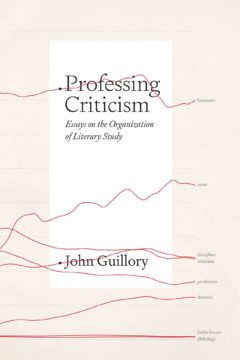 Jeffrey Herlihy-Mera in the LA Review of Books:
Jeffrey Herlihy-Mera in the LA Review of Books: Lee Harris in Foreign Policy:
Lee Harris in Foreign Policy: I
I While reading “What an Owl Knows,” by the science writer Jennifer Ackerman, I was reminded that my daughter once received a gift of a winter jacket festooned with colorful owls. At the time I thought of the coat as merely cute, but it turns out that the very existence of such merchandise reflects certain cultural assumptions about the birds: namely, that they are salutary and good.
While reading “What an Owl Knows,” by the science writer Jennifer Ackerman, I was reminded that my daughter once received a gift of a winter jacket festooned with colorful owls. At the time I thought of the coat as merely cute, but it turns out that the very existence of such merchandise reflects certain cultural assumptions about the birds: namely, that they are salutary and good.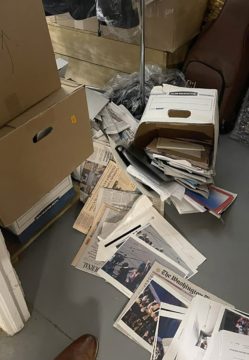 Studying “Hamlet,” the revenge play about a rotten kingdom, I tried for years to fathom Hamlet’s motives, state of mind, family web, obsessions.
Studying “Hamlet,” the revenge play about a rotten kingdom, I tried for years to fathom Hamlet’s motives, state of mind, family web, obsessions.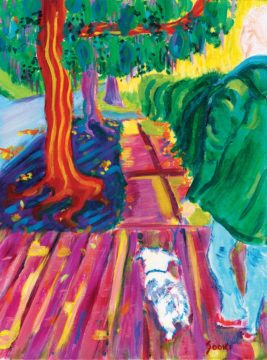 I can tell you where it all started because I remember the moment exactly. It was late and I’d just finished the novel I’d been reading. A few more pages would send me off to sleep, so I went in search of a short story. They aren’t hard to come by around here; my office is made up of piles of books, mostly advance-reader copies that have been sent to me in hopes I’ll write a quote for the jacket. They arrive daily in padded mailers—novels, memoirs, essays, histories—things I never requested and in most cases will never get to. On this summer night in 2017, I picked up a collection called Uncommon Type, by Tom Hanks. It had been languishing in a pile by the dresser for a while, and I’d left it there because of an unarticulated belief that actors should stick to acting. Now for no particular reason I changed my mind. Why shouldn’t Tom Hanks write short stories? Why shouldn’t I read one? Off we went to bed, the book and I, and in doing so put the chain of events into motion. The story has started without my realizing it. The first door opened and I walked through.
I can tell you where it all started because I remember the moment exactly. It was late and I’d just finished the novel I’d been reading. A few more pages would send me off to sleep, so I went in search of a short story. They aren’t hard to come by around here; my office is made up of piles of books, mostly advance-reader copies that have been sent to me in hopes I’ll write a quote for the jacket. They arrive daily in padded mailers—novels, memoirs, essays, histories—things I never requested and in most cases will never get to. On this summer night in 2017, I picked up a collection called Uncommon Type, by Tom Hanks. It had been languishing in a pile by the dresser for a while, and I’d left it there because of an unarticulated belief that actors should stick to acting. Now for no particular reason I changed my mind. Why shouldn’t Tom Hanks write short stories? Why shouldn’t I read one? Off we went to bed, the book and I, and in doing so put the chain of events into motion. The story has started without my realizing it. The first door opened and I walked through.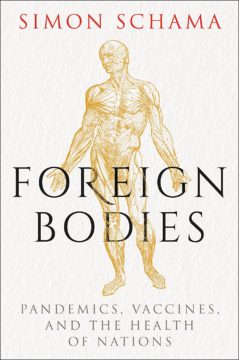 I was left wondering after a moment of peak Simon Schama – where we are led from his ‘idle’ purchase in Paris of a slim old book on Marcel Proust’s father, Adrien, to his own bookshelves by the Hudson River – whether great historians must have something close to a Proustian affinity for a particular period of history, one they understand not simply as a result of study but which they inhabit emotionally, with a quality not far separated from a kind of memory. The reason why the dim fog of mid-medieval western Europe was cleared by Richard Southern is because he understood that world at an elemental level and could translate that understanding to the reader. The same is true when it comes to Steven Runciman writing on Crusade-torn Byzantium, Eamon Duffy on England on the eve of the Reformation and David Brading on early colonial Latin America.
I was left wondering after a moment of peak Simon Schama – where we are led from his ‘idle’ purchase in Paris of a slim old book on Marcel Proust’s father, Adrien, to his own bookshelves by the Hudson River – whether great historians must have something close to a Proustian affinity for a particular period of history, one they understand not simply as a result of study but which they inhabit emotionally, with a quality not far separated from a kind of memory. The reason why the dim fog of mid-medieval western Europe was cleared by Richard Southern is because he understood that world at an elemental level and could translate that understanding to the reader. The same is true when it comes to Steven Runciman writing on Crusade-torn Byzantium, Eamon Duffy on England on the eve of the Reformation and David Brading on early colonial Latin America. I got the call late on a summer afternoon. Yanai Segal, an artist I’ve known for years, asked me whether I’d heard of the Salvator Mundi—the painting attributed to Leonardo da Vinci that was lost for more than two centuries before resurfacing in New Orleans in 2005. I told him that I’d heard something of the story but that I didn’t remember the details. He had recently undertaken a project related to the painting, he said, and wanted to tell me about it. I was eager to hear more, but first I needed to remind myself of the basic facts. We agreed to speak again soon.
I got the call late on a summer afternoon. Yanai Segal, an artist I’ve known for years, asked me whether I’d heard of the Salvator Mundi—the painting attributed to Leonardo da Vinci that was lost for more than two centuries before resurfacing in New Orleans in 2005. I told him that I’d heard something of the story but that I didn’t remember the details. He had recently undertaken a project related to the painting, he said, and wanted to tell me about it. I was eager to hear more, but first I needed to remind myself of the basic facts. We agreed to speak again soon.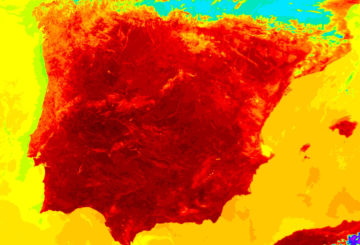 The trouble is not ignorance: we know that heat can kill. Humans have recognized the threat for millennia, and over the last two centuries they have scrutinized heat wave mortality to understand who is most at risk and to develop strategies to prevent those deaths. Still people die. Similarly, we have developed strategies that could moderate climate disaster due to global warming, but our fossil fuel
The trouble is not ignorance: we know that heat can kill. Humans have recognized the threat for millennia, and over the last two centuries they have scrutinized heat wave mortality to understand who is most at risk and to develop strategies to prevent those deaths. Still people die. Similarly, we have developed strategies that could moderate climate disaster due to global warming, but our fossil fuel